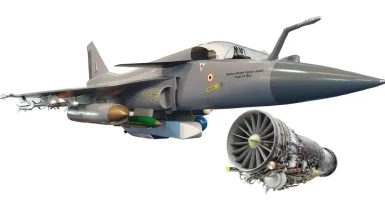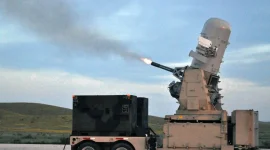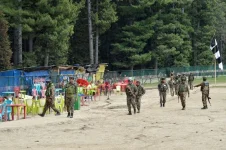- Views: 2K
- Replies: 12
A significant precondition has emerged in the ongoing defence negotiations between India and Russia, potentially shaping the future of the Indian Air Force's fleet.
India has made it clear that any potential procurement of Russia's fifth-generation Su-57E fighter jet will depend on the integration of India's own indigenously developed radar and sensor systems, a move that has reportedly caused concern among Russian defence officials.
The core of the issue lies in the aircraft's avionics, specifically its Active Electronically Scanned Array (AESA) radar. The Russian-offered Su-57E comes equipped with the N036 Byelka AESA system, which is based on Gallium Arsenide (GaAs) technology.
However, Indian defence experts contend that this technology is no longer at the cutting edge and falls short of the advanced capabilities of their domestic alternative.
In a major push for its national self-reliance policy, "Aatmanirbhar Bharat," India is advancing with its own Gallium Nitride (GaN)-based AESA radars. Developed by the DRDO, these next-generation systems are considered technologically superior.
GaN technology offers greater power efficiency, enhanced detection range, and superior resistance to electronic jamming compared to GaAs systems.
Prime examples of this domestic capability include the DRDO's 'Uttam' radar, which is already operational on Tejas fighter prototypes, and the more powerful 'Virupaksha' radar being developed for the Su-30MKI fleet upgrade.
This insistence on homegrown technology is a central pillar of India's future aviation strategy. The nation's own fifth-generation fighter program, the Advanced Medium Combat Aircraft (AMCA), and the enhanced 4.5-generation Tejas Mk2 are both slated to be equipped with these advanced GaN-based radars.
By demanding the same for the Su-57E, New Delhi is signalling a clear strategic shift towards standardising its most critical military technologies and reducing dependence on foreign suppliers.
From Moscow's perspective, the demand is seen as a challenge to the design integrity of the Su-57E and Russia's prestige as a leader in aerospace technology.
Russian officials had reportedly hoped that a generous package—including technology transfer, joint production at Hindustan Aeronautics Limited (HAL) facilities, access to source codes, and even payment in Indian rupees—would be sufficient to secure the deal.
The negotiations are taking place against the backdrop of India's larger effort to modernise its air force through the Multi-Role Fighter Aircraft (MRFA) program, a tender valued at approximately $20 billion to acquire 114 new jets.
In this competitive field, the Su-57E is vying with Western aircraft like France's Rafale and the American F-35. India's firm stance on its indigenous radar could significantly influence the outcome, potentially favouring competitors if Russia does not agree to the customisation.
Defence analysts interpret India's position as a reflection of its growing confidence as a developer and producer of high-end defence technology. With the first flight of the AMCA projected around 2029 and the Tejas Mk2 program advancing, India is negotiating from a position of increased strength.
The outcome of this radar dispute is now seen as a critical test for the future of the long-standing India-Russia defence relationship, demonstrating whether traditional partnerships can adapt to the new realities of technological sovereignty.



